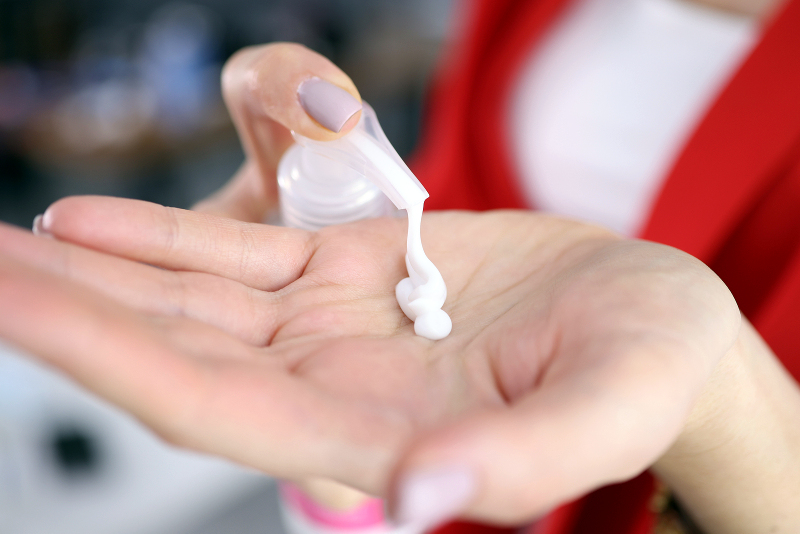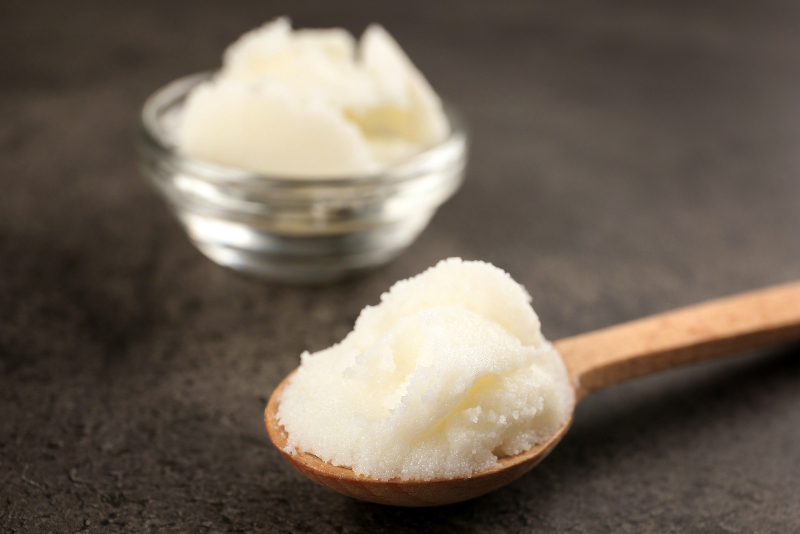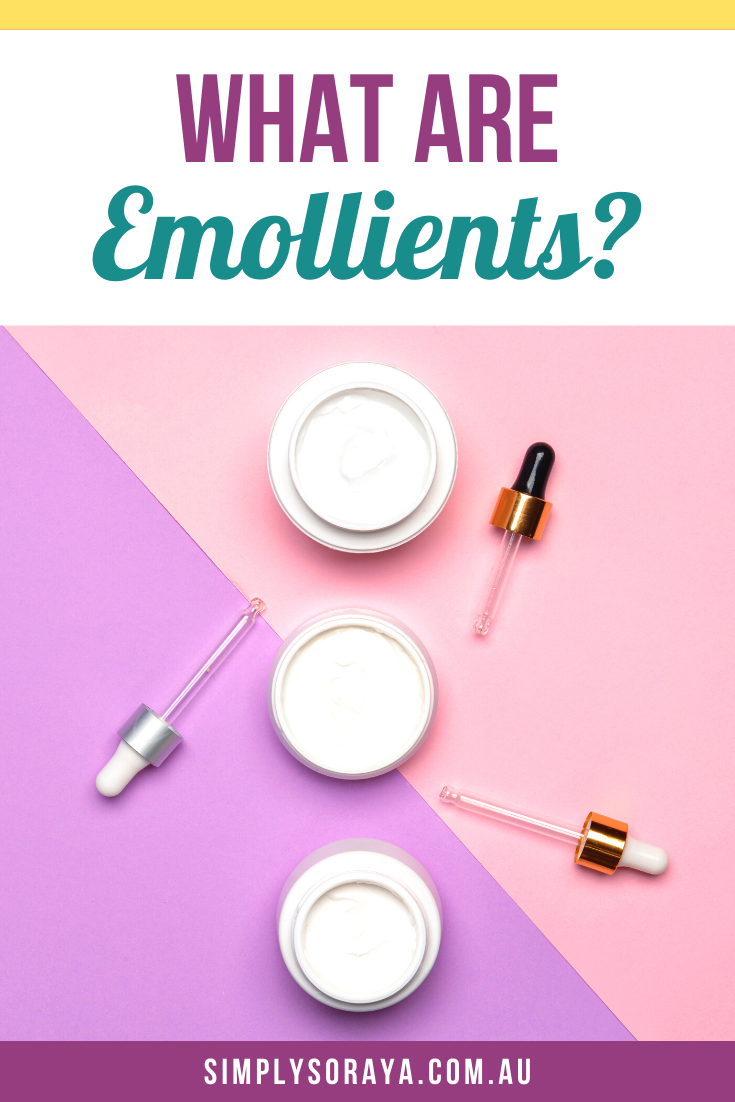An emollient is a frequently used ingredient in all kinds of skin care products. So, what are emollients?
Emollients can be any number of ingredients, such as, fats, silicones, oils, butters or chemicals and these products are used to help soften and smooth the skin.
What is emollient cream you ask? What is emollient cream used for? Many people are not aware that emollients and moisturisers are not the same thing. An emollient is essentially one part of a moisturiser that helps to keep the skin smooth and soft.
So what does emollient mean? The word emollient means to soothe and soften the skin. It is an ingredient that can be used alone or in creams, lotions, body butters and more.
Emollients help to make your skin feel better when dry, flaky, rough or cracked. Your skin needs hydration to remain soft and smooth and when the skin is lacking water, it can dry out, causing cracks and flakes on the skin.
A list of emollients, to name a few, include: almond oil, shea butter, jojoba oil, sesame oil and isopropyl palmitate. An emollient ingredient can also be considered an occulsive agent or a humectant.
An occulsive agent is an ingredient that provides a barrier on your skin to reduce moisture loss. It does not attract moisture to the skin.
Humectants are ingredients that when humid, attract water from the environment onto the skin and when dry draw moisture from beneath the layers of skin. They basically retain and attract moisture.
Many of these humectant and occulsive agent ingredients can also be emollients which do double the duty.
In this guide I will be running you through all you need to know about emollients. Answering questions like what is an emollient in skin care, what does an emollient do, what does emollient cream do and more!
What Are Emollients?
The definition of emollient is an ingredient that when applied to the skin will help make it softer, smoother and reduce pain from the irritation of dry skin.
So, what is emollient in skin care? Emollients come in many varieties from gels, lotions, sprays, ointment, creams, etc, and they are not perfumed. Emollients can be anything from oils, fats, silicones or chemicals and examples of emollients include mineral oil, shea butter, sesame oil, petrolatum, dimethicone and more.
Emollients are a particularly important ingredient for those who experience dry skin conditions like eczema. They are an effective and safe ingredient in skin care and treat dry, cracked, rough and flaky skin by filling in the gaps which soothes and softens the skin.
Those who experience dry skin conditions like eczema or psoriasis can benefit from frequent use of emollients as they are helpful in reducing the number of flare ups.
What is an emollient moisturiser? An emollient is essentially only one part of a moisturiser which softens the skin. Many moisturisers include other ingredients like occlusive agents and humectants.
These ingredients all work together to soften the skin (emollient) , hydrate the skin (humectant) and create a barrier to prevent moisture loss on the skin (occulsive agent).
 Pin
PinWhat Do Emollients Do?
What do emollients do for your skin? An emollient is a moisturising agent that is applied onto the skin to soften, replenish and soothe it. Emollients are commonly used to treat dry skin conditions like eczema, ichthyosis and psoriasis.
They work by repairing cracks and spaces in the skin cells by filling the spaces with fatty substances which also smoothes out the skin. Emollients alone only work to soothe and smooth the skin temporarily and require additional ingredients to have longer lasting effect.
What is the difference between an emollient and a moisturiser? I think this is an important question when talking about what does emollient do for skin as many people think emollients and moisturisers are the same thing.
Emollients are just one ingredient that is used in a moisturiser that work to soften and smooth the skin. They help to retain moisture in the skin due to the fatty substances. However, they are often absorbed quickly and require additional properties to help with attracting and retaining moisture.
Emollients alone do not introduce water into the skin or provide a barrier. However, certain emollients can also work as humectants, meaning they will do double the duty of softening and smoothing the skin (emollient) and introducing water into the skin (humectant).
Glycerin and petrolatum are good examples of ingredients that work both as emollients and humectants.
Certain emollients can also work to provide a barrier on the skin to prevent water loss (occulsive agents). Examples of emollients that are also occulsive agents include lanolin, dimethicone, petrolatum, etc.
Benefits Of Emollients
So, what is a skin emollient going to offer? There are several benefits of emollients and I go through these below.
Soothes, softens and replenishes the skin
What is emollient for skin best benefit? As I have mentioned, emollients work to fill in the gaps between your skin cells with fatty substances that help to soften, soothe and replenish the skin.
Helps to soothe dry skin conditions
Emollients are a helpful part of the skin care routine for individuals who experience dry skin conditions like eczema and psoriasis. Emollients can help to reduce the amount of flare ups by helping keep the skin soft and smooth.
Helps to maintain healthy skin
What does emollient do to skin? Emollients can help to maintain healthy skin by keeping it soft and smooth. Hot showers, harsh weather, soaps and more can strip your skin of its moisture and emollients can help to maintain your skins’ smooth texture.
 Pin
PinTypes Of Emollients
Emollients can include any number of ingredients and some of these include oils, silicones, fats, butters or chemicals.
What are examples of emollients? Some examples include mineral oils, shea butter, sesame oil, dimethicone, petrolatum and more.
These emollients can be combined with other ingredients to increase their effectiveness and can be found in many varieties like lotions, gels, ointments, creams and more.
What Are Emollients In Skin Care?
Emollients can be found in a wide range of skin care products and specific emollients you can use alone on your skin include:
- Shea butter
- Sesame oil
- Jojoba oil
- Petrolatum
- Almond oil
 Pin
PinHow To Use Emollients
It’s time to learn how to use emollients and how to apply emollients.
When using emollients, try to avoid using thick emollients on the face as they can cause break outs.
What emollients are good for eczema? What is the best emollient for skin care? Using emollients is pretty simple. Simply choose the emollient you think will work best with your skin needs. Emollients can range from thick and greasy to light and oily and it’s really up to your own personal preference.
To use your emollient, it is best to use it after showering, bathing or dampening the skin as emollients do not add hydration to the skin- unless of course your emollient is part of a moisturiser. Gently apply your emollient onto the skin and then pat your skin dry.
Final Words
I hope you have enjoyed this guide to what does emollient do to your skin. Emollients are generally used as the part of a moisturiser that helps to soften and soothe dry and cracked skin.
There are many ingredients that work as emollients and finding the one that best suits your needs will usually be based on personal preferences and your individual skin needs.
Whether you have been wondering what is emollient used for, what is the best emollient for dry skin or what is the difference between emollient and cream, I hope you have found this guide useful and helpful at answering your questions.
Want to learn more? Make our fantastic body butter here which acts as an emollient on your skin or body oil here. Read what carrier oils are here or natural preservatives here. Find all our guides to natural living here.
As an Amazon Associate I earn from qualifying purchases.

